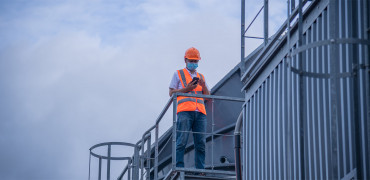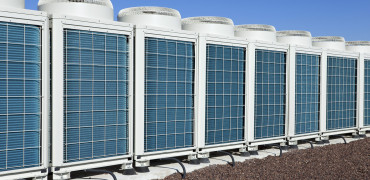UK retailers are often at the forefront of changing business practices to meet new consumer or government expectations.
We have seen this, for instance, in the greater availability of vegetarian and vegan foods in the past few years as supermarkets respond to growing consumer demand and the shift away from the over-production of meat.
And the same can be said for UK retailers’ drive to net zero.
In part, it’s a response to UK government policy and increased public awareness of the importance of reducing our personal carbon footprint as shoppers.
Surveys have identified that consumers want to spend their money with businesses that deliver on ESG commitments, including carbon reduction.
Companies can reap benefits for their bottom line and environmental footprint
An enormous task
The British Retail Consortium (BRC), whose members include the UK’s biggest retailers, has set a target of getting the whole UK retail industry and its supply chains to Net Zero by 2040.
It’s an enormous task, and the BRC established milestones along the way to that end date, including ensuring that all buildings are powered by renewable energy by 2025, with the sourcing of 100% renewable electricity by 2030.
But figures from the Department for Business, Energy & Industrial Strategy (BEIS) show that retail accounts for around 17% of the energy used in UK buildings, so energy efficiency will be crucial for the retail sector to reach those renewable energy use milestones.
And there is no escaping the fact that, in 2023, any savings made on energy use will reduce operating costs – making energy efficiency a profit centre in its own right.
Knowing where to start
For many retailers, finding energy savings can start with building services, particularly air conditioning. Not only is this a vital aspect of providing a comfortable environment for customers and staff, but it’s also a significant energy user.
Therefore, businesses should consider investing in energy-efficient air conditioning systems – or making their current systems more efficient - to help reduce their overall energy consumption.
Finding energy savings in this area can start with a review of air conditioning equipment in each building. This may seem obvious, but it’s surprising how easy it is to lose track of what’s installed at every store, particularly across an extensive portfolio.
Conducting a thorough review of the air conditioning equipment at each store will identify potential energy savings and ensure that each building’s system is up to date and running efficiently.
Better Buildings Partnership
For building managers facing the decision of where to start when it comes to energy efficiency projects, The Better Buildings Partnership highlights four factors to consider when prioritising energy efficiency improvements:
- Ease of implementation
- Cost
- Payback
- Anticipated savings
When looking at air conditioning systems with these points in mind, one option could be to adopt a controls-based strategy. This is relatively easy to implement (compared with replacing the whole system, for example) and can help improve building energy efficiency.
It can also include the installation of sensors and other technologies to help monitor and regulate ventilation, temperature, and other elements of the indoor environment.
Controls should also help to collect data on energy use in a building. This is vital for long-term energy efficiency and carbon reduction programmes.
Collecting data makes it possible to compare buildings – spot what works and apply that in other stores or pick out high-energy-using areas for further improvements.
Mitsubishi Electric’s MELCloud is a cloud-based solution for controlling air conditioning (and other) systems locally or remotely. This means that a central facilities management team can oversee the performance of systems across an entire retail estate (even one that’s global) and identify.
This is particularly useful for gathering data and spotting potential equipment issues before they become breakdowns.
Step by step guidance
When looking at more involved projects around replacing older air conditioning equipment, it is vital to work with a manufacturer who can help you roll out the end-of-life equipment and develop a program of work that allows for the new equipment to be introduced with minimal interruption.
In these days of disrupted supply chains, ensuring the smooth delivery of equipment as needed is invaluable and will help make projects more predictable in terms of both time and cost.
Considering every aspect of energy use in a retail store is vital if the industry is to reach its Net Zero and renewable energy targets. The incentives for taking these steps are both environmental and business, particularly given the rising cost of energy. By investing in energy-saving air conditioning systems, companies can reap benefits for their bottom line and environmental footprint.
You can find further practical tips and advice in a free publication produced jointly by Mitsubishi Electric worked and the British Retail Consortium: A Step by Step Guide to Energy Efficiency and Carbon Reduction in the Retail Sector.
James Harman, is a Business Development Manager for the Corporate Team




